Transition, Transformation & Transparency
Sustainable Value Chains to Accelerate Digital Transformation and the Compliance Culture in SMEs
Konectoma enhances the value creation capabilities of integrated supply chains in each region, with sensitivity to the type of supply ecosystem, territory, and stakeholders, consolidating a network that responds to the sustainability challenges of Scope Three.


Collaborative Value Chains
Konectoma connects hub companies within supply ecosystems with SMEs linked to their upstream or downstream supply chains, expanding value generation capabilities for sustainability.


Risk Management and Compliance
The Value Chains that sustain SMEs face challenges in managing ESG risks, complying with sustainability and transparency requirements, and navigating complex regulations like GDPR and the European reporting system EFRAG.




Digital Divide & Competencies in 4.0 Technologies
Many SMEs lack access and knowledge to adopt advanced technologies such as Artificial Intelligence and Blockchain, and face a significant shortage of qualified personnel in digital competencies to ensure sustainable practices.
Adoption of End-to-End Sustainability Transparency
Large companies and exporting SMEs to and from Europe and North America must comply with increasingly demanding standards in decarbonization and sustainability reporting practices. This has led to new due diligence requirements in extended supply chains for Scope 3. However, SMEs often lack the organizational capacities and technological complexity that this transition demands and that their clients require.
→
→
→
→
B2B2B Business Model
The business model is B2B2B, connecting anchor companies with their extended network of SME suppliers. Konectoma stands out for its integral and holistic approach, advanced technology, a collaborative ecosystem supported by a unique gamified user experience, our productivity enhancement methodology called TRUST, and a strong focus on the scalability and sustainability of SMEs.
Portable Credentials:
Portable Credentials - Beyond their use as verifiable records of individual skills, portable credentials should be understood as strategic enablers within the ecosystem. They support SMEs not only in hiring or contracting talent but also in positioning themselves within value chains. These credentials are carried by individuals as they respond to job opportunities, and by SMEs as they align with anchor firms or join collective initiatives—such as those driven by the European Green Deal—to demonstrate compliance and shared commitment.
Dispute Resolution Features:
Built-in conflict mediation workflows. Integrated conflict mediation features are enhanced by a structured framework that leverages multi-agent automation. Pre-defined workflows and smart policy triggers facilitate transparent, fair, and fast resolution of common operational issues between SMEs and anchor companies. By automating repetitive coordination tasks and flagging inconsistencies before they escalate, the system reduces friction, avoids email overload, and maintains trust—ensuring collaboration stays focused on shared goals.
Konectoma & the Compliance Culture
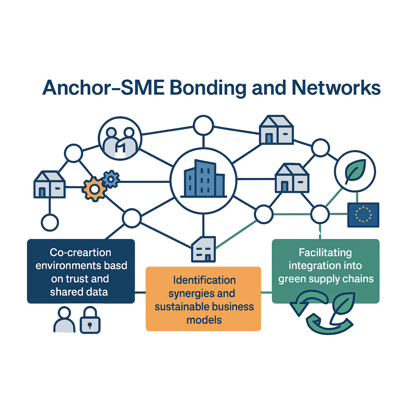

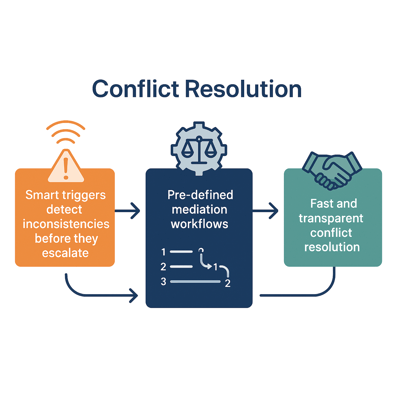

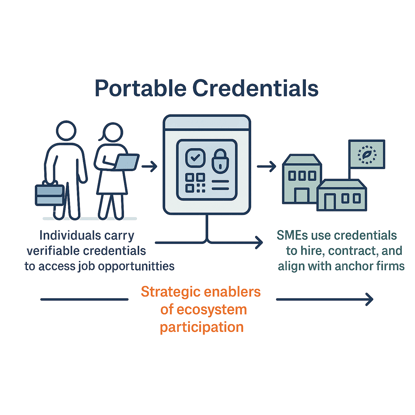

SME Digitalization
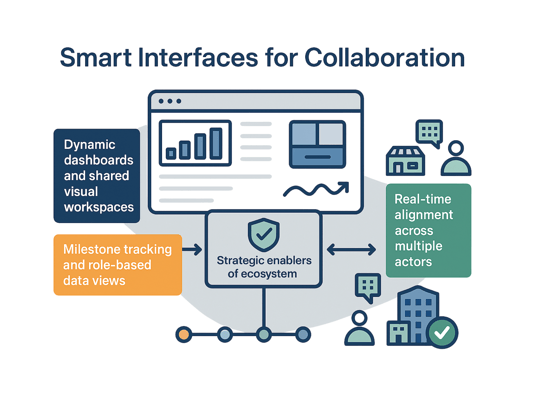

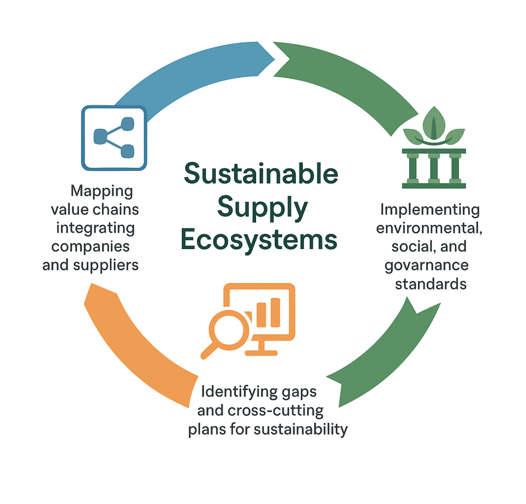

Empowering SMEs through the Integration of Extended Supply Chains
Konectoma’s Value Chain Integration Model creates a collaborative learning ecosystem that connects large and medium-sized companies with their extended SME supplier networks and employees, fostering the exchange of knowledge, solutions, and best practices. This approach promotes cooperation across the value chain, generating synergies that accelerate digital transformation and improve operational efficiency. By collaborating, companies share resources and experiences that streamline processes, strengthening their adaptability in increasingly competitive environments.
Smart Collaboration
Visual Collaboration Tools - Dynamic dashboards and shared visual workspaces replace disjointed communication channels. These tools enable real-time alignment across SMEs, anchor companies, and individual contributors. Built-in timeline tracking, milestone indicators, and role-based data views foster transparency, streamline coordination, and reduce misunderstandings—laying the foundation for scalable, trust-driven collaboration.
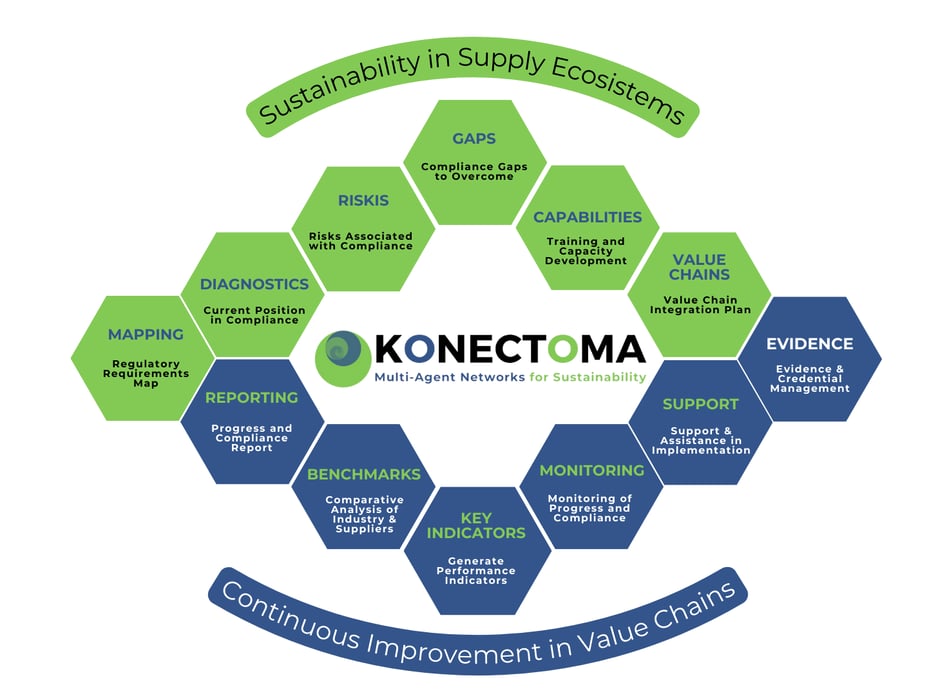

Konectoma
We drive digitalization and sustainability for SMEs and their value chains.
Conexion
I WANT MORE INFORMATION
co-founder@konectoma.co
© 2024. All rights reserved.
